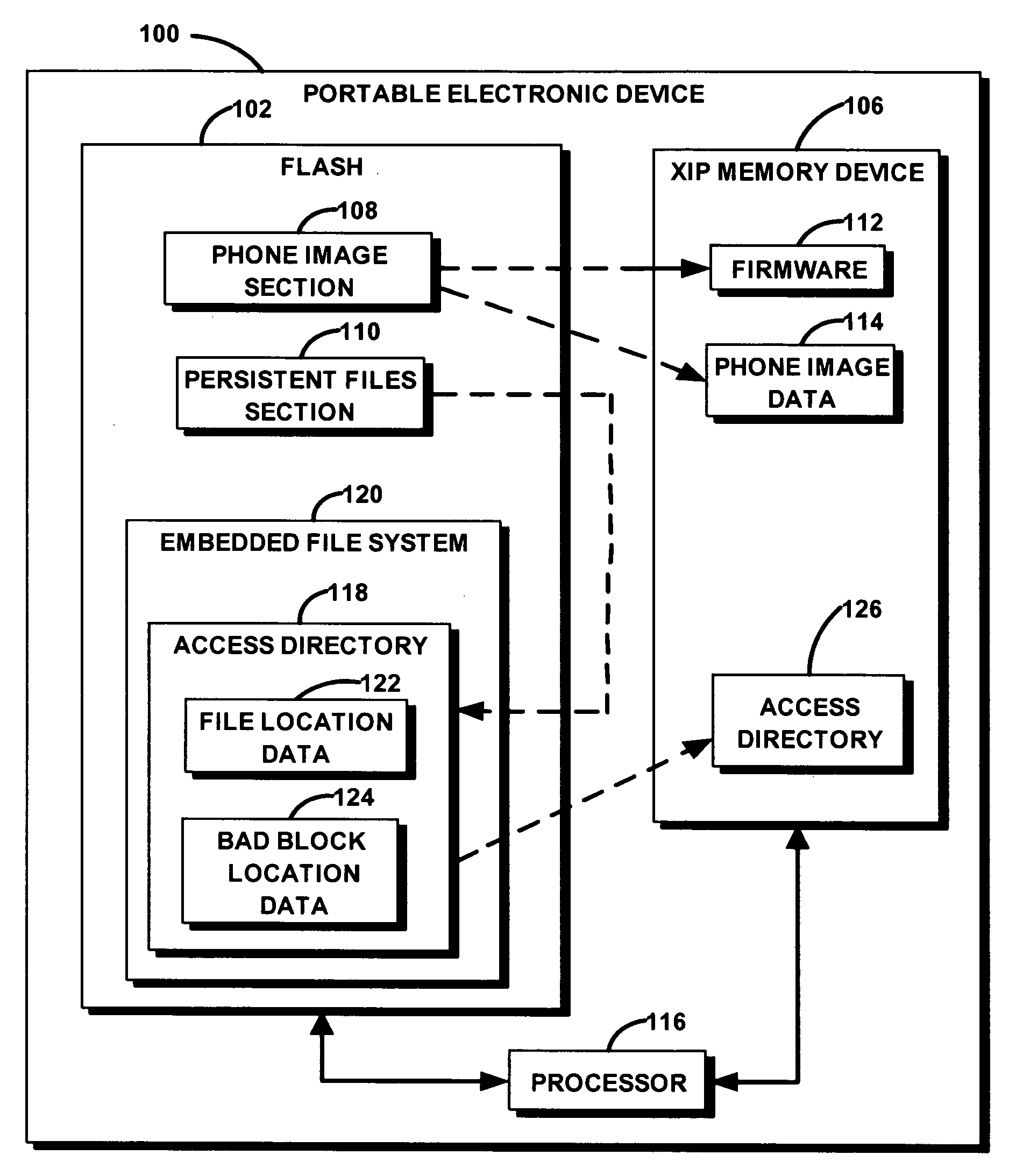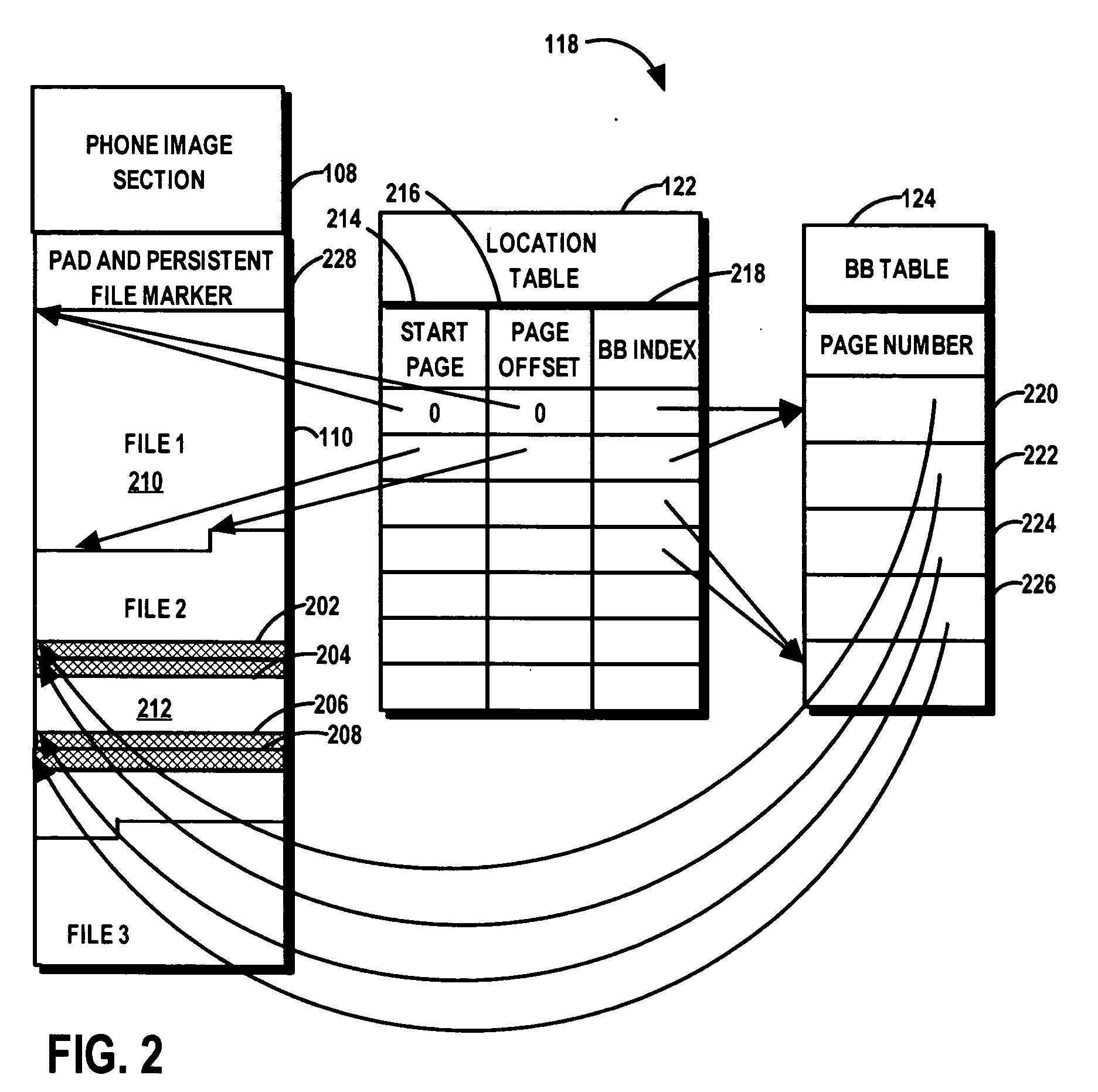Apparatus, system, and method for accessing persistent files in non-execute-in-place flash memory
a technology of flash memory and applicability, applied in the field of memory devices, can solve the problems of increasing increasing the complexity of portable electronic devices, and increasing the memory required for persistent files and firmware, so as to reduce the manufacturing cost of electronic devices and minimize the size of the xip memory device
- Summary
- Abstract
- Description
- Claims
- Application Information
AI Technical Summary
Benefits of technology
Problems solved by technology
Method used
Image
Examples
Embodiment Construction
[0011]FIG. 1 is a block diagram of portable electronic device 100 in accordance with an exemplary embodiment of the invention. The various functions depicted in FIG. 1 may be performed by any combination of hardware, software and firmware. Any function described as performed by a single block may be performed by multiple devices or systems and the functions of more than one block may be performed by a single device.
[0012] Portable electronic device 100 is any device that at least includes non-XIP flash memory device 102, execution-in-place (XIP) memory device 104 and persistent files that facilitate operation of the portable electronic device 100. In the exemplary embodiment, portable electronic device 100 is a cellular telephone where non-XIP flash memory device 102 is a NAND flash memory device and execution in place (XIP) memory device 106 is a SDRAM device. Before device 100 is placed into service, persistent files and phone image files are copied to non-XIP flash memory device...
PUM
 Login to View More
Login to View More Abstract
Description
Claims
Application Information
 Login to View More
Login to View More - R&D
- Intellectual Property
- Life Sciences
- Materials
- Tech Scout
- Unparalleled Data Quality
- Higher Quality Content
- 60% Fewer Hallucinations
Browse by: Latest US Patents, China's latest patents, Technical Efficacy Thesaurus, Application Domain, Technology Topic, Popular Technical Reports.
© 2025 PatSnap. All rights reserved.Legal|Privacy policy|Modern Slavery Act Transparency Statement|Sitemap|About US| Contact US: help@patsnap.com



